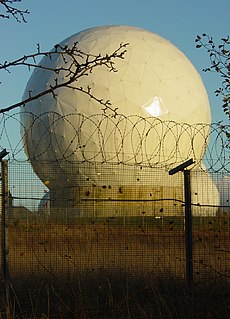
ECHELON, originally a secret government code name, is a surveillance program operated by the United States with the aid of four other signatory states to the UKUSA Security Agreement: Australia, Canada, New Zealand, and the United Kingdom, also known as the Five Eyes.

Signals intelligence (SIGINT) is intelligence-gathering by interception of signals, whether communications between people or from electronic signals not directly used in communication. Signals intelligence is a subset of intelligence collection management. As sensitive information is often encrypted, signals intelligence in turn involves the use of cryptanalysis to decipher the messages. Traffic analysis—the study of who is signaling whom and in what quantity—is also used to derive information.

A communications satellite is an artificial satellite that relays and amplifies radio telecommunications signals via a transponder; it creates a communication channel between a source transmitter and a receiver at different locations on Earth. Communications satellites are used for television, telephone, radio, internet, and military applications. There are 2,134 communications satellites in Earth's orbit, used by both private and government organizations. Many are in geostationary orbit 22,236 miles (35,785 km) above the equator, so that the satellite appears stationary at the same point in the sky, so the satellite dish antennas of ground stations can be aimed permanently at that spot and do not have to move to track it.

A reconnaissance satellite or intelligence satellite is an Earth observation satellite or communications satellite deployed for military or intelligence applications.

A military satellite is an artificial satellite used for a military purpose. The most common missions are intelligence gathering, navigation and military communications.

USS Mount Whitney is one of two Blue Ridge-class amphibious command ships of the United States Navy and is the flagship and command ship of the United States Sixth Fleet. USS Mount Whitney also serves as the Afloat Command Platform (ACP) of Naval Striking and Support Forces NATO (STRIKFORNATO). The ship had previously served for years as the COMSTRIKFLTLANT(NATO Designation) / US Second Fleet's command ship. She is one of only a few commissioned ships to be assigned to Military Sealift Command.

Project Echo was the first passive communications satellite experiment. Each of the two American spacecraft, launched in 1960 and 1964, was a metalized balloon satellite acting as a passive reflector of microwave signals. Communication signals were bounced off them from one point on Earth to another.
Communication with submarines is a field within military communications that presents technical challenges and requires specialized technology. Because radio waves do not travel well through good electrical conductors like salt water, submerged submarines are cut off from radio communication with their command authorities at ordinary radio frequencies. Submarines can surface and raise an antenna above the sea level, then use ordinary radio transmissions, however this makes them vulnerable to detection by anti-submarine warfare forces. Early submarines during World War II mostly traveled on the surface because of their limited underwater speed and endurance; they dived mainly to evade immediate threats. During the Cold War, however, nuclear-powered submarines were developed that could stay submerged for months. Transmitting messages to these submarines is an active area of research. Very low frequency (VLF) radio waves can penetrate seawater a few hundred feet, and many navies use powerful VLF transmitters for submarine communications. A few nations have built transmitters which use extremely low frequency (ELF) radio waves, which can penetrate seawater to reach submarines at operating depths, but these require huge antennas.
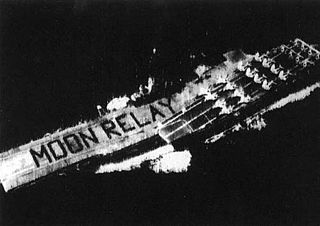
The Communication Moon Relay project was a telecommunication project carried out by the United States Navy. Its objective was to develop a secure and reliable method of wireless communication by using the Moon as a natural communications satellite — a technique known as Earth–Moon–Earth communication (EME). Most of the project's work took place during the 1950s at the United States Naval Research Laboratory. Operation Moon Relay was spun off from a classified military espionage program known as Passive Moon Relay (PAMOR), which sought to eavesdrop on Soviet military radar signals reflected from the Moon.
Earth–Moon–Earth communication (EME), also known as Moon bounce, is a radio communications technique that relies on the propagation of radio waves from an Earth-based transmitter directed via reflection from the surface of the Moon back to an Earth-based receiver.

The United States Army Signal Corps (USASC) is a division of the Department of the Army that creates and manages communications and information systems for the command and control of combined arms forces. It was established in 1860, the brainchild of Major Albert J. Myer, and had an important role in the American Civil War. Over its history, it had the initial responsibility for portfolios and new technologies that were eventually transferred to other U.S. government entities. Such responsibilities included military intelligence, weather forecasting, and aviation.

Military communications or military signals involve all aspects of communications, or conveyance of information, by armed forces. Military communications span from pre-history to the present. The earliest military communications were delivered by runners. Later, communications progressed to visual and audible signals, and then advanced into the electronic age. Examples from Jane's Military Communications include text, audio, facsimile, tactical ground-based communications, terrestrial microwave, tropospheric scatter, naval, satellite communications systems and equipment, surveillance and signal analysis, encryption and security and direction-finding and jamming.

Technical research ships were used by the United States Navy during the 1960s to gather intelligence by monitoring, recording and analyzing wireless electronic communications of nations in various parts of the world. At the time these ships were active, the mission of the ships was covert and discussion of the true mission was prohibited. The mission of the ships was publicly given as conducting research into atmospheric and communications phenomena. However, the true mission was more or less an open secret and the ships were commonly referred to as "spy ships".

A spy ship or reconnaissance vessel is a dedicated ship intended to gather intelligence, usually by means of sophisticated electronic eavesdropping. In a wider sense, any ship intended to gather information could be considered a spy ship.
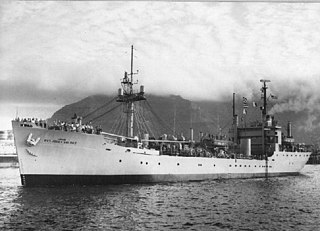
USNS Private Jose F. Valdez (T-AG-169), named after World War II Medal of Honor recipient PFC Jose F. Valdez, was a technical research ship in operation during the 1960s. The "Galloping Ghost of the Ivory Coast" or "Grey Ghost of the African Coast", as she was affectionately called by her crew, was deployed around Africa from 1961 until 1969.
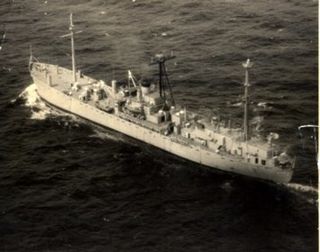
USS Jamestown (AGTR-3/AG-166) was an Oxford-class technical research ship acquired by the U.S. Navy for the task of "conducting research in the reception of electromagnetic propagations" (SIGINT).
For the unifying conceptual and technical factors in this intelligence discipline, see Signals intelligence. For specific collection platforms, see SIGINT Operational Platforms by nation for current collection systems, and for context, see SIGINT in Modern History. For a complete hierarchical list of related articles, see the intelligence cycle management hierarchy.
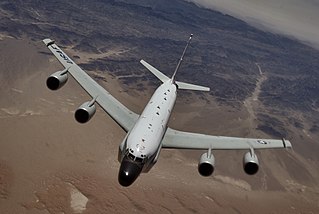
Signals intelligence operational platforms are employed by nations to collect signals intelligence, which is intelligence-gathering by interception of signals, whether between people or between machines, or mixtures of the two. As sensitive information is often encrypted, signals intelligence often involves the use of cryptanalysis. However, traffic analysis—the study of who is signalling whom and in what quantity—can often produce valuable information, even when the messages themselves cannot be decrypted.
SIGINT is a contraction of SIGnals INTelligence. Before the development of radar and other electronics techniques, signals intelligence and communications intelligence (COMINT) were essentially synonymous. Sir Francis Walsingham ran a postal interception bureau with some cryptanalytic capability during the reign of Elizabeth I, but the technology was only slightly less advanced than men with shotguns, during World War I, who jammed pigeon post communications and intercepted the messages carried.
















